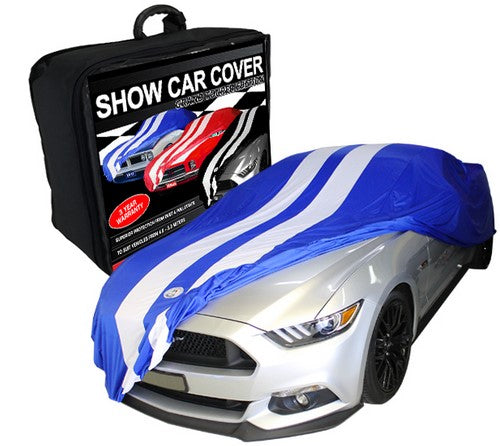
Protecting Your Vehicle: Understanding the Risks of Using a Car Cover
Share
As a vehicle owner, one of the key aspects of maintenance is keeping the exterior of your car in pristine condition so lets look at protecting your vehicle: understanding the risks of using a car cover. Many people turn to car covers as a solution to protect their paintwork from the elements.

However, a common concern is whether a car cover can damage the vehicle's paintwork rather than safeguard it.
Can a Car Cover Scratch Your Paint?
One of the primary worries associated with using a car cover is the risk of scratching the paint. This concern is not unfounded, as improper handling or low-quality materials in a car cover can contribute to scratching the surface of your vehicle. You must ensure that any car cover you use has a soft interior lining, (usually felt), to protect the paintwork. It should be noted that no Professional Detailer will recommend the use of a car cover. Any car cover will cause ‘spiralling” on a ceramic coating. Best to use a Bubble or a car tent.
Automobile Covers - Moisture Buildup: A Hidden Risk
One of the overlooked risks of using a car cover is moisture buildup. When moisture gets trapped between the cover and the paintwork, it can lead to a host of issues such as mould growth and causing paint damage over time. You must ensure that any cover you use is either ‘breathable’ or has anti-condensation breathe holes.
The Importance of a Proper Fit
A key factor to consider when using a car cover is ensuring it fits your vehicle correctly. An ill-fitting cover can flap in the wind, which can create friction and potentially scratch the paint. It is essential to choose a cover that snugly fits your car to minimise movement.

Auto Covers for Cars, The Role of Material Quality
The quality of the car cover material also plays a crucial role in preventing paint damage. opt for a cover made from soft, non-abrasive internal material to reduce the risk of scratches. Additionally, consider investing in a cover with a soft inner lining to provide an extra layer of protection. Buy from a reputable Australian Business like Car Covers and Shelter and avoid US Based businesses like Australia Car Covers.
Weather Conditions: The Wear and Tear Factor
Harsh weather conditions can accelerate the wear and tear on both your car cover and paintwork. Exposure to rain, snow, and ice can cause the cover material to degrade over time, potentially leading to scratches or damage to the paint underneath.
Cover for A Car - Sunlight and Heat: Another Factor to Consider
Prolonged exposure to sunlight and heat can also impact the effectiveness of a car cover. UV rays can cause the cover material to deteriorate, becoming brittle and more prone to scratching the paint. It is essential to choose a cover with UV protection to shield your vehicle from the sun's harmful effects.
Wind and Abrasive Particles, Protecting Your Vehicle: Understanding the Risks of Using a Car Cover
Wind can also pose a risk to your paintwork when using a car cover. Abrasive particles carried by the wind can get trapped between the cover and the vehicle, leading to scratches over time. Ensure your car cover is securely fastened to prevent flapping and minimize the risk of abrasion.
Is it Good to Put a Car Cover on Your Car?
In conclusion, while a car cover can be a valuable tool in protecting your vehicle from the elements, it is essential to consider the potential risks to your paintwork. By choosing a high-quality cover that fits properly and using it in conjunction with proper maintenance practices, you can minimize the risk of damage to your car's paint.
Does a Car Cover Ruin Car Paint?
A car cover, when used correctly, should not ruin your car's paint. However, if not properly maintained or if a low-quality cover is used, there is a risk of scratching or damaging the paintwork. Regularly inspecting the cover for signs of wear and tear, ensuring a proper fit, and investing in a cover made from quality material are key steps in preventing paint damage while using a car cover.
Summary - Protecting Your Vehicle: Understanding the Risks of Using a Car Cover
In conclusion, protecting your vehicle's paintwork requires a comprehensive approach that combines the use of a car cover with proper maintenance practices. By understanding the risks associated with using a car cover and taking proactive measures to mitigate them, you can keep your car looking its best for years to come. Feel free to Contact Car Covers and Shelter for more information.
